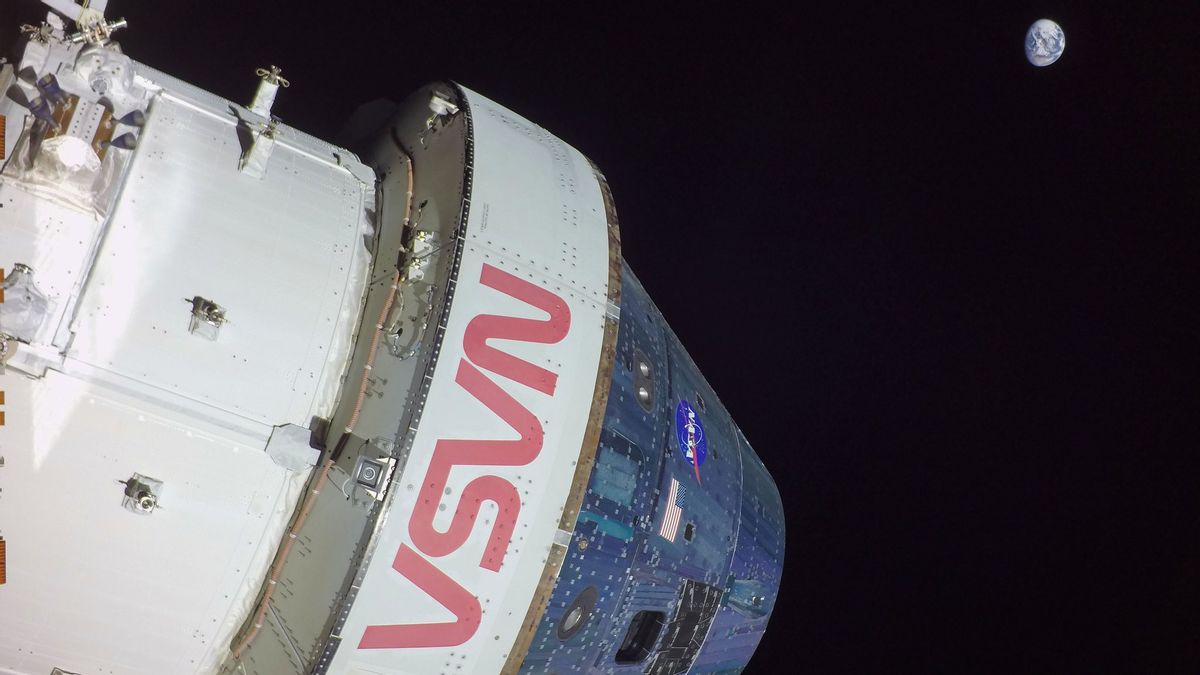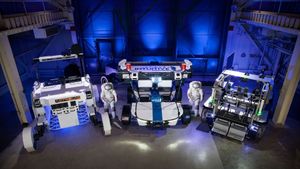JAKARTA - The Orion spacecraft that boarded the Space Launch System (SLS) rocket to orbit the Moon some time ago has just set a record for NASA flights.
At 8:40 a.m. ET Saturday, Orion flew farther than any spacecraft designed to carry human astronauts before.
Orion surpassed the previous record set by Apollo 13 in 1970. On that day, at 10:17 a.m. ET, Orion was approximately 249.666 miles from Earth.
"Artemis I was designed to emphasize the Orion system and we settled on a far retrograde orbit as a very good way to do that," said Orion integration manager Jim Geffre.
"Incidentally with that very large orbit, high altitude above the Moon, we were able to pass the Apollo 13 record. But what is more important is pushing the boundaries of exploration and sending the spacecraft farther than we have ever done before," he added.
However, the original Apollo 13 flight did not plan a record-breaking flight. Because, there was an explosion in the middle of the mission that forced NASA to plan a new return route.
The Odyssey Apollo 13 command module set the previous record at 248.655 miles from Earth. With the limited oxygen supply in the Lunar Aquarius module, NASA needed to get Apollo 13 back to Earth as quickly as possible.
NASA finally used the Moon's gravity to push Apollo 13 back to Earth. Launching Engadget, Monday, November 28, one of the very important NASA crew for the safe return of astronauts Jim Lovell, Jack Swigert and Fred Haise on Apollo 13 was Arturo Campos.
SEE ALSO:
Campos wrote a contingency plan that gave the command and services module enough power to make it back to Earth.
Earlier this week, Orion completed a lunar flyby. After the spacecraft has completed half an orbit around the satellite, it will propel itself toward Earth. NASA predicts Orion will land off the coast of San Diego, California, USA, on December 11.

The Orion Captures Images of the Moon's Surface
Before entering the Distant Retrograde Orbit (DRO Moon), Orion also managed to capture a photo of the moon's surface when it was within 80 miles of Earth's natural satellite.
The resulting photos are now shared on the Flickr account for all to see. The photos of the Moon captured by Orion are not as colorful as those captured by the James Webb Telescope.
Seen in the image an uneven surface with lots of visible holes or gaps. Although it looks pretty scary, the Artemis I mission has been a success so far, and so we could see a manned mission to Mars in the 2030s.
The English, Chinese, Japanese, Arabic, and French versions are automatically generated by the AI. So there may still be inaccuracies in translating, please always see Indonesian as our main language. (system supported by DigitalSiber.id)


















